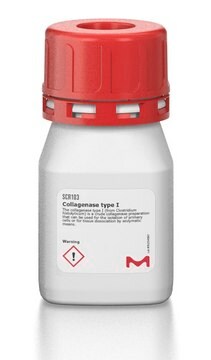D1306
Debrisoquine sulfate
powder, ≥98% (TLC)
Synonyme(s) :
3,4-Dihydro-2(1H)-isoquinolinecarboximidamide, Debrisoquin sulfate, Ro 5-33071
About This Item
Produits recommandés
product name
Debrisoquine sulfate,
Pureté
≥98% (TLC)
Niveau de qualité
Forme
powder
Pf
285 °C
Solubilité
H2O: 20 mg/mL (with heat)
Température de stockage
room temp
Chaîne SMILES
OS(O)(=O)=O.NC(=N)N1CCc2ccccc2C1.NC(=N)N3CCc4ccccc4C3
InChI
1S/2C10H13N3.H2O4S/c2*11-10(12)13-6-5-8-3-1-2-4-9(8)7-13;1-5(2,3)4/h2*1-4H,5-7H2,(H3,11,12);(H2,1,2,3,4)
Clé InChI
CAYGYVYWRIHZCQ-UHFFFAOYSA-N
Informations sur le gène
human ... SLC6A2(6530)
Vous recherchez des produits similaires ? Visite Guide de comparaison des produits
Actions biochimiques/physiologiques
Substrats
Mention d'avertissement
Warning
Mentions de danger
Conseils de prudence
Classification des risques
Acute Tox. 4 Oral
Code de la classe de stockage
11 - Combustible Solids
Classe de danger pour l'eau (WGK)
WGK 3
Point d'éclair (°F)
Not applicable
Point d'éclair (°C)
Not applicable
Équipement de protection individuelle
dust mask type N95 (US), Eyeshields, Gloves
Certificats d'analyse (COA)
Recherchez un Certificats d'analyse (COA) en saisissant le numéro de lot du produit. Les numéros de lot figurent sur l'étiquette du produit après les mots "Lot" ou "Batch".
Déjà en possession de ce produit ?
Retrouvez la documentation relative aux produits que vous avez récemment achetés dans la Bibliothèque de documents.
Articles
Phase I biotransformation reactions introduce or expose functional groups on the drug with the goal of increasing the polarity of the compound. Although Phase I drug metabolism occurs in most tissues, the primary and first pass site of metabolism occurs during hepatic circulation.
Notre équipe de scientifiques dispose d'une expérience dans tous les secteurs de la recherche, notamment en sciences de la vie, science des matériaux, synthèse chimique, chromatographie, analyse et dans de nombreux autres domaines..
Contacter notre Service technique






